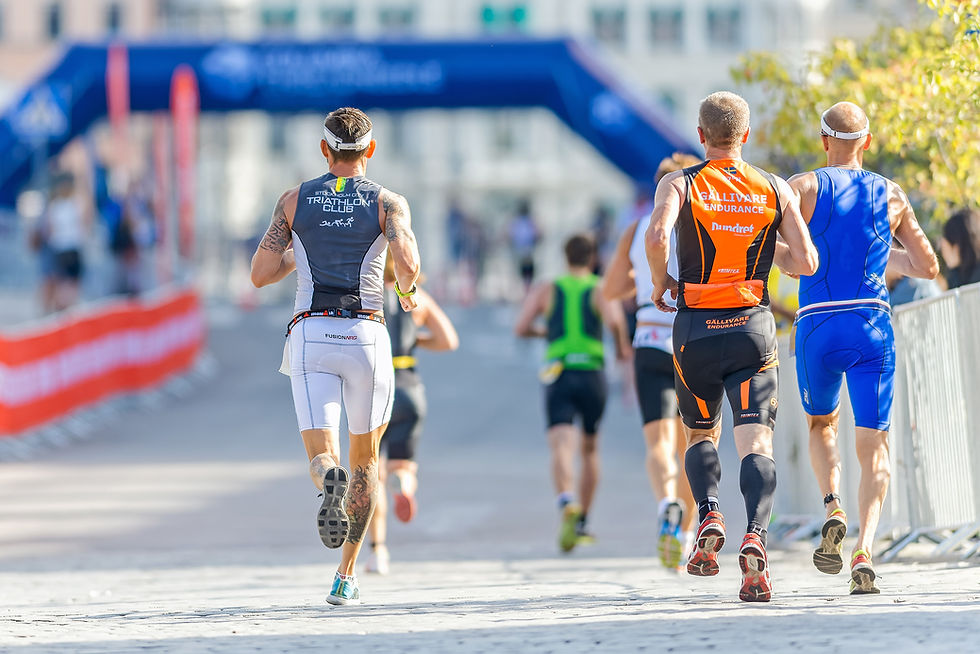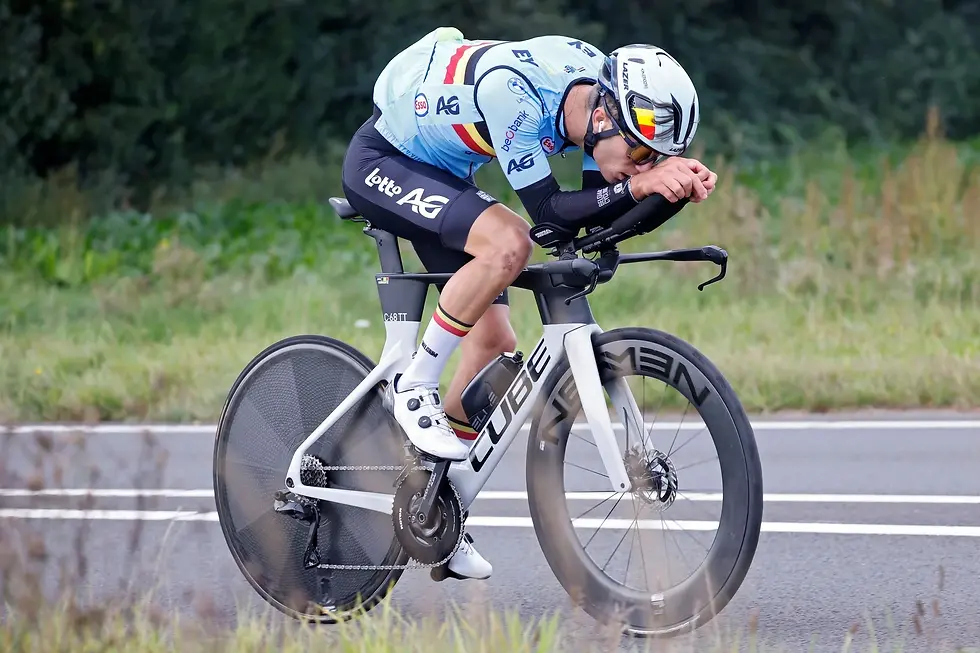The 4th Discipline: Mental Strategies for Every Leg of Your Triathlon
- Emily Mortimer

- Aug 15
- 4 min read

Triathlon season is in full force this summer, dominating social feeds and we’re loving it. Everyone seems to be taking the plunge (literally) into their first triathlon. Even world-class athlete Adam Peaty made his T100 debut, perfectly embodying the power of stepping outside your comfort zone, embracing growth and leaning into the unknown.
There’s a decent chance you’ve been thinking maybe I could do that…? (Spoiler- you can) but there’s a reason your heart rate jumps at the thought of signing up. Triathlon isn’t just swim, bike, run, it’s three unique back to back mental battles. When you step outside your comfort zone, there’s a lot to consider but don’t let that stop you! The mix of exhilaration and intimidation is where growth happens.
Triathlon comes with a whole load of potential problems. It’s an emotional regulation nightmare at the swim start, the long grind on the bike and the need to cognitively reframe those stop signals your body screams on the run. Our 3 tips will help race day feel less like a test and more like a challenge you’re built for.

Shifting Focus: Swim Smarter, Stay Calmer
The start of a triathlon is frantic, the shock of cold water, splashing arms, and your technique feels like it’s evaporated. In that chaos, your greatest tool is the ability to manipulate and control your attention.
Elite athletes use Nideffer’s Attentional Model to shift focus between what’s happening around them and what’s happening within them. Amongst a chaotic start, the ability to seamlessly shift attentional focus is essential.
How to apply it:
Broad–External: At the gun, scan your surroundings, who’s around me? Where’s the buoy line?
Narrow–External: Lock onto one thing, a lead swimmer’s feet, the next buoy, a kayak, and let it guide you.
Narrow–Internal: When anxiety spikes, draw your attention inward with a simple cue like “smooth” or “strong” to master your stroke and focus on the controllables.
Broad–Internal: Periodically perform a body scan from your head position through to your pull and kick allowing you to reset and refocus.
Shifting like this stops you getting lost in the noise. You stay aware, allowing you to navigate strategically, but anchored enough to keep your composure and efficiency. Practice attention cycling in training so on race day these attentional shifts feel instinctive.

Finding Flow: Bike in Sync, Ride with Purpose
The bike is where triathletes can either settle in or mentally check out. This mid-race mental slog can quietly pull you away from your goals as comfort starts whispering in your ear, tempting you to settle instead of push. Here’s your hack: Find another rider whose cadence matches your ideal pace. Lock in alongside or just behind, and match pedal strokes
This isn’t just drafting (check your race rules!), its rhythmic synchronisation. This concept is drawn from research into elite rowers and demonstrates the power of athletes moving in sync. It’s thought to boost pain tolerance thanks to an endorphin-mediated response.
Translation? Your brain gets a natural painkiller, to help you push harder for longer. You’ll feel more connected, less fatigued, and experience increased focus as the miles roll on.
How to apply it:
First kilometre: Find your rhythm partner and match their cadence to lock in through coordinated movement.
When discomfort creeps in: Narrow your focus to the circular motion of the pedal, and find your flow.
On climbs: To maintain consistent effort as the intensity increases, lock into each pedal stroke and the power generated.
Mid-leg slump: Set micro-goals to keep your brain active, like holding your ideal cadence for 20 pedal revolutions.

Reframing Fatigue: Run with Control, Finish with Power
The final leg is where your inner voice and body shouts the loudest, heavy legs, burning muscles, spiking heart rate. Most of us interpret this as “please stop now” messages and heightened self-doubt.
But, sports psychology, specifically Marcora’s psychobiological model of endurance performance, tells us fatigue is a perception problem as much as a physical one.
By reframing these sensations as data, not danger, you stop your mind from spiralling.
Utilise thoughts such as “My legs are heavy” into information you can work with, not a red-alert or verdict of your ability to finish. This cognitive reappraisal directs focus to perceived exertion rather than obsessing over your watch splits. This will reduce mental fatigue and prevent early burnout.
How to apply it:
First 500m: Settle breathing and scan posture, head up, shoulders relaxed feel the rise and fall of each breath.
When fatigue hits: Name the sensation neutrally “breathing fast” and adjust your form to maintain effort.
Mid-leg: Focus on one controllable for 2 minutes, cadence, arm drive, or foot strike
Final push: Narrow your attention on a word or mantra that embodies your intention: ‘drive’, ‘strength’, or the iconic, ‘Lucy Davies wouldn’t quit.’

Your Fourth Discipline
Triathlon is broken into 3 parts but there’s a fourth that needs training, your mind. It might just be the most important. Emotional regulation, rhythmic synchronisation, and cognitive reframing aren’t just tricks. They’re mental skills that make every stroke, pedal, and step feel purposeful and controlled. Building these skills will develop the kind of mental resilience to help you ace your first triathlon and future challenges.
To get race-ready for the unfamiliarity and challenge triathlon throws at you, start with Focus Foundation Plan in the Getahead app. It’s designed to help you:
Stay composed in chaotic race moments
Lock into rhythm when your mind starts to drift
Refocus fatigue without letting doubt take over
This plan builds the exact mental skills you’ll need from the first stroke to the final stride, so when race day comes, your mind will be as ready as your body.
🎯 Train your brain like an athlete. Download Getahead and start your Focus Foundation Plan today.
Emily
Psychology Content Writer, Getahead
Comments